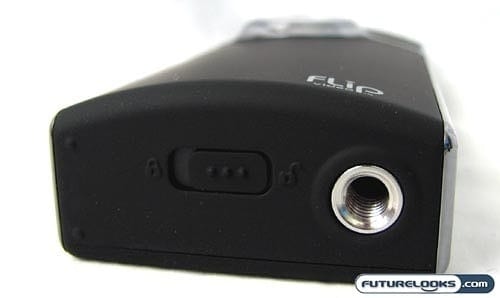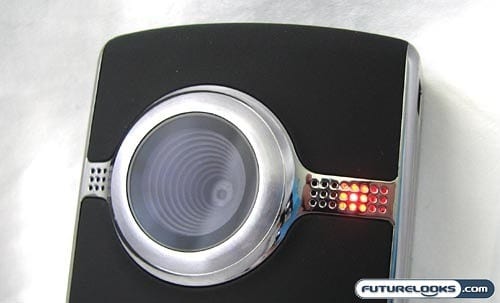A Quick Tour of the Outside

Along one side of the Flip UltraHD, you’ll find that familiar flip-out USB connector from which the device derives its name. There is a small slider switch that holds the USB connector in place when it is not in use. New to the UltraHD is the HDMI port on this same side.
The idea is that you can share your videos directly on an HDTV via an HDMI connection. As mentioned earlier in this review, however, the HDMI port on the UltraHD is a Mini HDMI port and Pure Digital did not include a compatible cable in the box. You’ll need to get that on your own.
On the other side are the power button and a slot where you can thread the provided wrist strap.

One the underside, you get the standard tripod mount and a simple switch that locks the front compartment. Sliding this switch over to the unlocked side lets you remove the entire front panel so that you can access the battery pack. The slider switch is not spring-loaded, so make sure you have it in the locked position while you are actually using the Flip UltraHD.
Turning on the Red Light

If you want easy, you’ve got easy. If you want HD, you’ve got HD. It’s not quite 1080p, but the 720p video offered by the Flip UltraHD is pretty good too. The approach taken with this pocket camcorder remains largely unchanged over the three Flip Video camcorders that preceded it, so everything is started with hitting the power button, waiting a couple seconds for the boot up process, and hitting that big red button to record your memories.

The screen on the UltraHD is a non glare 2.0 inch LCD, compared to the 1.5 inches of the MinoHD. Just as with the Flip MinoHD though, the aspect ratio of the display appears to be 4:3. This is a little strange, considering that your videos will be recorded in 16:9. The rationale is the letterbox effect provides space for key information.
At the top, you can see if you are ready (and which video clip you are watching in review mode) and at the bottom, you can see the remaining recording time left on the internal memory. This information does not obscure the video itself.
